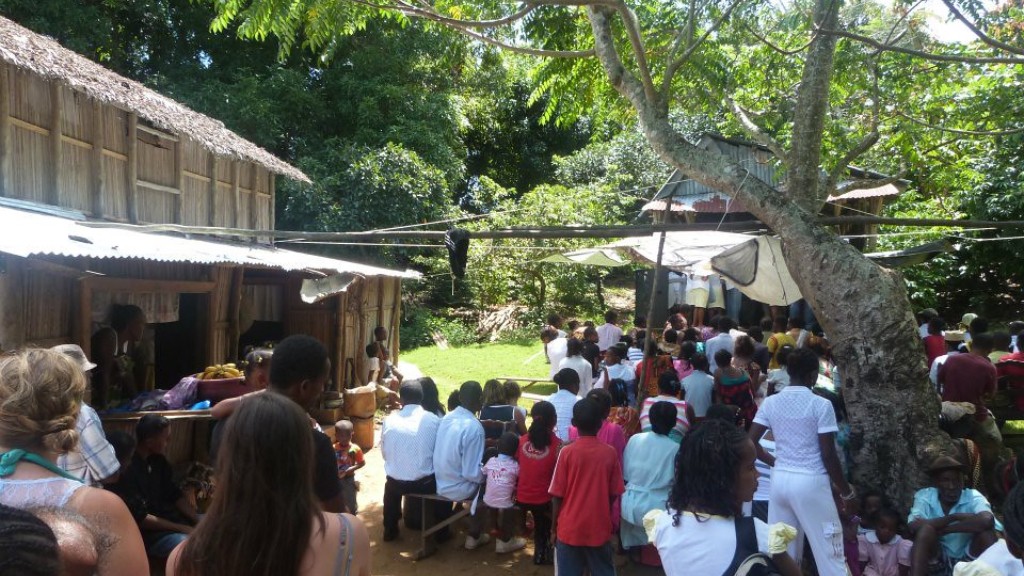Where do people in Madagascar live
Madagascar, the fourth largest island in the world, is not only known for its unique biodiversity, but also for its diverse and vibrant population. With a population of approximately 27 million people, Madagascar is home to various ethnic groups, each with its own distinct cultural traditions and ways of life.
The majority of the population in Madagascar live in rural areas, with only about 30% residing in urban environments. This can be attributed to the country’s predominantly agricultural economy, where the cultivation of rice, coffee, vanilla, and other crops is the main source of livelihood for many Malagasy people.
In rural areas, traditional houses called “an-dalana” are commonly found. These houses are typically made of local materials, such as wood, grass, and clay. They are often small and simple, comprising of one or two rooms. The design of these houses varies depending on the region and the ethnic group. For example, in the highlands, houses are often built on stilts to protect against flooding during the rainy season.
In urban areas, particularly in the capital city Antananarivo, modern apartment buildings and houses can be seen. As the economic and political center of the country, Antananarivo attracts people from different regions who seek better job opportunities and services. The housing options in urban areas are more diverse, ranging from small apartments to larger, more luxurious houses.
According to the World Bank, about 80% of the Malagasy population live below the poverty line. This has a significant impact on housing conditions, particularly in rural areas where access to basic services, such as clean water and sanitation facilities, is limited. Many rural communities rely on communal water sources, such as wells or rivers, and often lack access to electricity.
Experts emphasize the importance of improving infrastructure and providing better housing conditions to alleviate poverty and improve the overall well-being of the Malagasy people. Organizations like Habitat for Humanity and local government initiatives are working towards providing affordable and sustainable housing solutions in both rural and urban areas.
In conclusion, the majority of the population in Madagascar live in rural areas, with a smaller percentage residing in urban centers. Traditional houses can be found in rural areas, while urban areas boast a mix of modern apartments and houses. However, poverty remains a significant challenge in the country, affecting housing conditions and access to basic services. Efforts are being made to address these issues and improve the housing situation for the people of Madagascar.
Natural Environment and Human Settlements
The unique natural environment of Madagascar, with its rainforests, grasslands, and coastal areas, has a significant influence on human settlements. The Malagasy people have adapted to various ecosystems, resulting in different settlement patterns across the country.
In the eastern rainforests of Madagascar, people tend to live in clustered villages surrounded by agricultural fields. The hills and valleys have limited the expansion of settlements and have led to the development of terrace farming techniques to maximize land use.
In the highlands, where the terrain is characterized by plateaus and mountains, terracing is also a common practice. Communities in these areas often live in compact villages built on hilltops or slopes, with individual houses tightly arranged.
Coastal areas provide suitable conditions for fishing communities. These communities typically live in coastal villages near lagoons or estuaries, relying on marine resources for their livelihoods.
Traditional Building Techniques and Materials
In rural areas of Madagascar, traditional building techniques and materials are still widely used. The availability of local resources and the need to adapt to the climate and environment have shaped these traditional practices.
One commonly used material is bamboo, which is abundant in Madagascar. Bamboo houses are lightweight, flexible, and can withstand the strong winds experienced in some regions.
Another traditional building technique involves using a mixture of mud, clay, and straw to construct walls. This technique is prevalent in the rural highlands, as these materials are readily available and provide good insulation.
Thatched roofs made from grass or palm leaves are also common. They provide natural cooling and insulation, essential in the hot and humid climate of Madagascar.
The Impact of Cultural Diversity on Settlement Patterns
The diverse ethnic groups in Madagascar have influenced settlement patterns and the development of cultural landscapes. Each group has its own unique traditions, language, and social organization.
In the southern region of Madagascar, for example, the Antandroy ethnic group practices a form of cattle farming. Settlements in this area are often organized around cattle enclosures, which play a key role in the local economy and way of life.
The Merina, who are predominantly found in the central highlands, have a strong agricultural tradition. They practice wet rice cultivation, and their settlements are characterized by terraced fields and clustered villages.
These cultural landscapes not only reflect the adaptation of different groups to their environment but also contribute to the rich cultural heritage of Madagascar.
Challenges and Opportunities in Urbanization
The rapid urbanization and population growth in Madagascar present both challenges and opportunities for the country.
Urban areas face issues such as overcrowding, inadequate housing, and inadequate access to basic services. However, urbanization also brings opportunities for economic growth, improved infrastructure, and better access to education and healthcare.
It is crucial for the government and relevant stakeholders to address these challenges and ensure sustainable urban development that benefits all residents.





